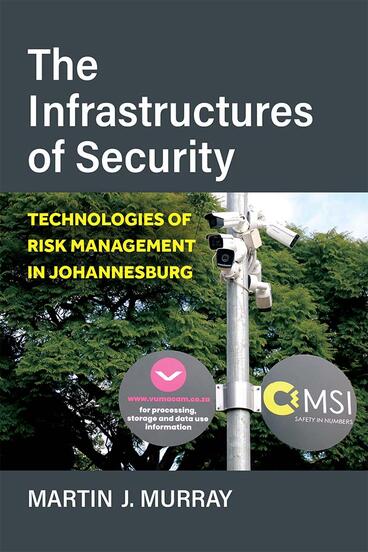The Infrastructures of Security
Technologies of Risk Management in Johannesburg
The shift from dependence upon human decision-making in security services to Artificial Intelligence
Description
Much of the South African government’s response to crime—especially in Johannesburg—has been to rely increasingly on technology. This includes the widespread use of video cameras, Artificial Intelligence, machine-learning, and automated systems, effectively replacing human watchers with machine watchers. The aggregate effect of such steps is to determine who is, and isn’t, allowed to be in public spaces—essentially another way to continue segregation.
In The Infrastructures of Security, author Martin J. Murray concentrates on not only the turn toward technological solutions to managing the risk of crime through digital (and software-based) surveillance and automated information systems, but also the introduction of somewhat bizarre and fly-by-night experimental “answers” to perceived risk and danger. Digitalized surveillance is significant for two reasons: first, it enables monitoring to take place across wide "geographical distances with little time delay"; and second, it allows for the active sorting, identification, and "tracking of bodies, behaviors, and characteristics of subject populations on a continuous, real-time basis." These new software-based surveillance technologies represent monitoring, tracking, and information gathering without walls, towers, or guards.
Martin J. Murray is Professor of Urban Planning, Taubman College of Architecture and Urban Planning, University of Michigan.
Reviews
“The Infrastructures of Security makes an important scholarly contribution, and it will influence public debates on critical processes shaping contemporary Johannesburg.”
- Noor Nieftagodien
—Noor Nieftagodien, University of the Witwatersrand
“This book provides a wealth of data on technology driven security in South Africa, as well as vivid and detailed accounts of the workings of security and its connection to societal fears. The topic is of the utmost relevance for understanding contemporary societal configurations and the role/position of the various actors in creating them.”
- Federica Duca
—Federica Duca, University of the Witwatersrand
"Similar to the flying insect, security devices can be small in size and largely ignored, yet they can easily trump an individual’s rights and discriminatorily target only the unwanted ‘have-nots’. This is why critical analyses of security systems are crucial and compelling, making Murray’s book an important contribution to scholarship."
- Anna Di Ronco
—Theoretical Criminology

